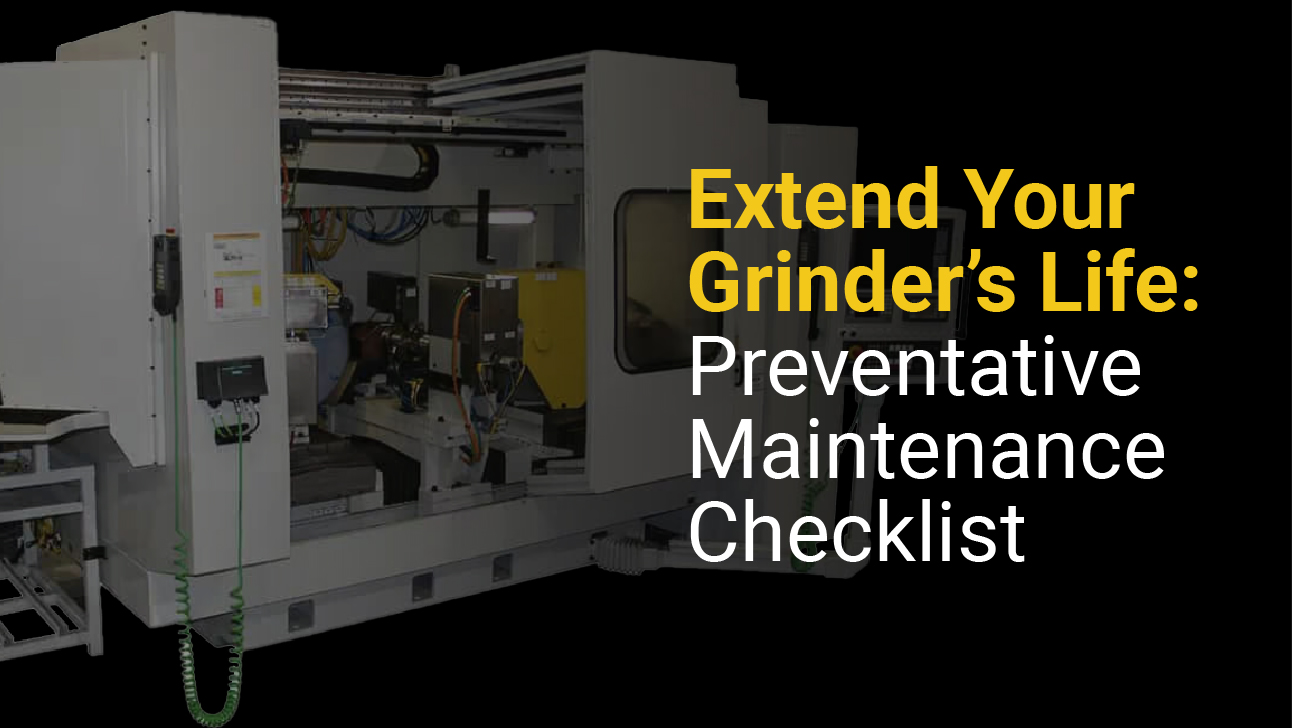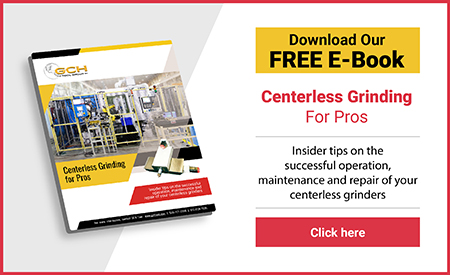Extend Your Grinder’s Life: Preventative Maintenance Checklist

Grinders are indispensable tools in various industries and applications. From metal fabrication to woodworking, grinders are used for sanding, polishing and grinding surfaces. However, like all machines, grinders require maintenance and care for optimal performance and extended life.
Preventative maintenance is crucial to avoid expensive repairs and possible safety hazards. A well-designed checklist should cover all aspects of a grinder’s maintenance, including pre-operation checks, best practices during operation and post-operation maintenance. By following this grinder preventative maintenance checklist, operators can significantly extend the life of their grinders and ensure optimal performance.
Pre-Operation Checks
Inspect Wheels and Dress Them Regularly
Grinding wheel dressing is the process of removing dulled or worn abrasive grains from a wheel, so fresh and sharp grains can take their place. It’s important to do this maintenance on grinding wheels because they can get clogged with metal particles and become less effective over time.
Checking for damage and uneven wear can prevent any further damage from occurring, and even more importantly, can prevent injury. It’s also important to follow the manufacturer’s recommendations for dressing and the proper frequency.
Check Guards and Safety Equipment
Using safety guards and maintaining their proper position is essential for preventing accidents while using power tools. As part of your grinder safety checklist, it’s vital to regularly check electrical cords and safety equipment like eye shields and dust collectors to ensure that they are in working order. This is especially crucial for grinders, which can cause serious injuries if used improperly.
Ensure Proper Lubrication
Without a sufficient supply of lubricant, friction and wear can occur to any mechanical system that involves moving parts, leading to damages that can be expensive to repair. By providing a protective layer between parts like bearings, chains and gears, lubricants reduce friction and wear, resulting in a smoother, more efficient machine operation.
To ensure proper lubrication, consider integrating an automated lubrication system into your grinding machine and follow the manufacturer’s instructions for checking and maintaining the lubricant levels.
Adjust the Coolant System and Flow
Checking coolant flow will require monitoring hoses, filters and meters to ensure they are functioning correctly and not blocked. It’s also important to remember to regularly change your coolant to prevent buildup and potential issues down the line. By keeping your grinder coolant system in good working order, you can ensure that your machinery stays in top condition, operating efficiently and effectively for many years to come.
Level the Work Rest
A properly leveled work rest is crucial for offering adequate support for your grinder. Not only does it ensure your comfort and control while using the machine, but it also prevents accidents and injuries caused by loose or wobbly components.
Adjusting the work rest can be a simple process but one that requires careful attention to detail. Using a leveling tool or simply a flat surface, adjust the height of your grinder to ensure it is level with the workbench. Then, use a wrench or pliers to adjust the work rest until it is flush with the grinding wheel and parallel to the ground.
During Operation Checklist
Avoid Overloading the Machine
Exceeding your grinding machine’s recommended amperage or pressure can result in a variety of negative outcomes, ranging from overheating and reduced efficiency and productivity to significant machine damage. A key part of grinder overload prevention is being mindful of how much pressure or force you place on the machine when using it.
Use Appropriate Grinding Techniques
When it comes to grinding, maintaining a steady feed rate is crucial for achieving the desired results. A consistent feed rate helps to ensure that the workpiece is ground evenly and avoid any over- or under-grinding that can occur due to variation in speed.
Avoiding jerking is just as important as it can cause the grinder to skip or bounce, ultimately resulting in poor surface quality. An improper grinding technique not only produces poor results but also poses safety risks for the operator.
Monitor Vibration and Noise
Unusual vibrations or noises can be an indication of problems such as misalignments, unbalanced components or worn-out parts. For example, when a grinder begins emitting high-pitched noises or excessive vibration during use, it may be due to a damaged wheel or bearing.
By identifying such abnormalities, you can take steps to address the issue before it escalates.
Some grinder vibration troubleshooting methods include inspecting for visible damage, checking for loose or worn-out parts and testing different grinding positions or speeds.
Clean and Cool Down after Use
One aspect of maintenance that is often overlooked is allowing the machine to cool down before storing it. This is important because if the grinder is stored while still hot, it can warp or damage any plastic components, making it more difficult to achieve accurate grinds in the future. Another essential aspect of grinder maintenance is cleaning it regularly to remove dust and debris that may have accumulated during use.
Post-Operation Maintenance Checklist
Store the Grinder Properly
Store the grinder in a clean, dry environment. Keeping it in a damp or dirty space can lead to corrosion or damage that could affect its performance. Furthermore, disconnecting power is essential to prevent potential electrical hazards. Always ensure the grinder is unplugged and its components are safely stored.
Schedule Regular Inspections and Service
Following the manufacturer’s recommended maintenance schedule is imperative, as it will help you avoid costly repairs and replacements down the line. Among the most critical components to check during inspections are bearings, belts and other moving parts, as these are often subject to significant wear and tear.
Keep Records and Update Parts
By keeping a detailed record of past maintenance efforts and issues, owners can accurately track what has been done, as well as identify any recurring issues that need further attention. This can help prevent costly breakdowns or even more significant repairs, ultimately saving time and money. In addition, using high-quality grinder replacement parts from reputable sources is essential for maintaining the lifespan of an item.
Also Read: Tips for Extending the Lifespan of Your Grinder Parts
GCH Tool Group Helps Keep Grinders Running Smoothly
A grinder maintenance checklist can help you stay on top of regular maintenance tasks to ensure the longevity and efficiency of your machine. By following our comprehensive guide, you can ensure that your grinder is running at its full potential and avoid any potential breakdowns or production delays.
At GCH Tool Group, we understand the significance of a well-maintained grinder in maximizing productivity and profitability for your business. That’s why we offer high-quality replacement parts and components for all types of grinders to keep them running smoothly. Our team of experts is dedicated to providing quick responses and quotes to help you get back up and running as soon as possible. Contact us today for more information.

